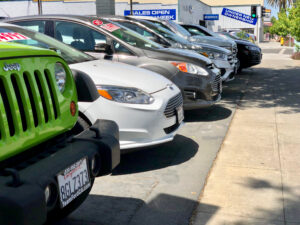Will We See A Sudden Change to Used Vehicle Values?
I’ve had several conversations in the past week or so with dealers wondering if we’ll soon see a “burst” in what some have dubbed a used vehicle pricing bubble.
Dealers point to a recent and slight downward trend in wholesale  values as proof that we’re past the high point of the used vehicle market, and we’ll soon see a dramatic tumble in vehicle values.
values as proof that we’re past the high point of the used vehicle market, and we’ll soon see a dramatic tumble in vehicle values.
I can appreciate the viewpoint. It reflects a keen understanding throughout the retail automotive industry that ours is a uniquely cyclical business, where what goes up must eventually come down.
Even so, the industry economists and analysts I speak to every week don’t think we’re in the early stage of a sudden market correction, and that the sky will soon be falling. Rather, we’re seeing exactly what Cox Automotive analysts have expected us to see—an easing of the historically high wholesale value appreciation that occurred in 2021. The analysts also expect that wholesale value appreciation will return in more robust fashion as retail demand picks up when spring, and tax refund checks, arrive.
The outlook’s a little less rosy for the back-half of 2022. By then, we are likely to see a fall-off in retail demand due to expected increases in interest rates. News outlets this week report that the Federal Reserve is likely to raise interest rates next month, followed by similar-size increases in late spring, summer and the fall.
But even with incremental interest rate increases, analysts don’t anticipate a sudden drop, or a burst in the current used vehicle pricing bubble. Instead, they suggest we’ll see what amounts to a “an accelerated seasonal decline” in used vehicle values in the summer and fall. If the outlook proves true, it’ll be costly for dealers who load up on inventory at the peak of the market this spring and find fewer shoppers looking to purchase used vehicles.
I’m also certain we’ll see more headlines that predict the used vehicle bubble will “burst.” When the stories arrive, I’d encourage dealers to remember the economic fundamentals of supply and demand and how they shape used vehicle values.
To wit, the sustained appreciation of used vehicle values arrived because of an imbalance of supply and demand. The used vehicle market supply is diminished. Think of all the leases that were not initiated in the past two years, and the fleet vehicles that weren’t built and put into service. Add in the growing number of consumers who are buying back their current leased vehicles to either continue using them or sell them to someone else to make a return.
No one expects the current constraints on used vehicle supplies to change dramatically any time soon. Hence, you’d have to look at the demand side of the equation to determine if there’s any risk of a sudden drop-off in used vehicle values, or the so-called “burst” of the bubble.
From what I can tell, retail demand for used vehicles is expected to remain relatively strong through the spring. Retail used vehicle sales will be buoyed by higher-than-average tax refund checks, a desire among consumers to replace and/or update a current vehicle and still-limited supplies of available new vehicles. As the effects of higher interest rates sink in with consumers, we can expect retail demand will slow, and vehicle values will diminish. Such market dynamics do not, however, represent a dramatic or sudden change.
To be sure, we might experience some unexpected or unforeseen circumstance that disrupts retail demand, causes consumers to suddenly pause their used vehicle shopping and triggers a sudden drop in used vehicle values.
But that’s not the outlook I anticipate. Instead, I see a horizon that bodes well for dealers who align their used vehicle inventories and prices to the current market and use it to know when a change is around the corner.
